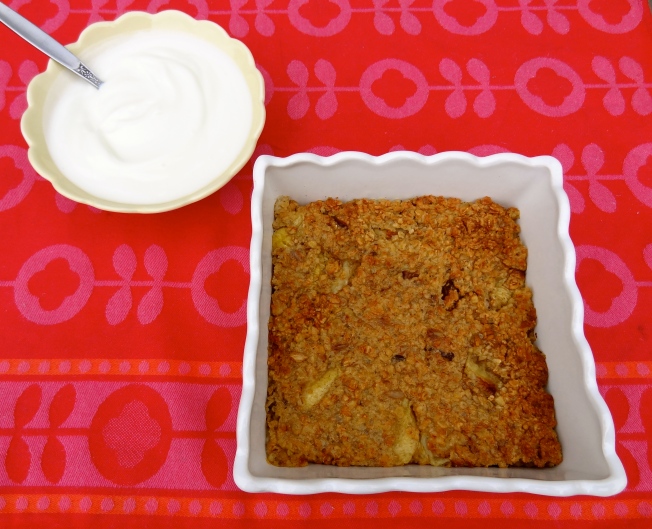I’ve been living the “single life” on and off for a few years now as my Beau and I have lived in different locations for work and play. I generally adjust pretty well to life as a solo lass and have come up with a few recipes which have saved my bacon on many a late night home.
Falafel is something that I’ve been a big fan of for a long time and especially fell in love with whilst living in Jordan a few years back. In Jordan and other countries in the Middle East, falafel is a serious business. There are various people involved in the falafel creation process; from preparing, forming, frying and drying the falafel. The freshest of fresh falafel balls are then devoured with hummus, pickles and pita bread hot from the oven – and yes, the experience is amazing. The picture below is from Hashems, the world famous falafel joint in the Old Town in Amman, Jordan. I really did eat a lot of falafel that day.

Back in New Zealand, no falafel has ever come close to those halcyon days of life in the Middle East. Until recently – when I finally gave it a go myself and tried hard to replicate what those falafel artisans had made, though in true Super Foodie style, much, much healthier.
The key is to start with the best chickpeas (also referred to as garbanzos). I go to the organic shop Taste Nature around the corner from my apartment Dunedin, New Zealand. Taste Nature source their chickpeas from Turkey via Chantal Organics. Chickpeas are nutritional powerhouses, being highly valued for their high fibre and protein content, as well as iron, phosphate, calcium, magnesium, manganese, zinc and vitamin K.
The benefits of sprouting are aplenty and definitely get the Super Foodie tick of approval. Once seeds, grains and beans have been sprouted, they have 15 – 30% more protein, more vitamins and minerals, including vitamin E, vitamin C, vitamin K, calcium, iron and phosphorous. Through the sprouting process, these mini plants are bursting with nutrition and vitality. They’re also easier to digest, as the complex sugars are broken down and enzyme inhibitors are neutralised, in turn decreasing bloating from intestinal gas.
If you’ve never sprouted chickpeas before, it’s a doddle and only takes about a minute of your time everyday until they’re fully germinated. All you’ll need is: chickpeas, muslin cloth, a wide bowl and a rubber band. Rinse and soak the chickpeas in water for 24 hours. Put the muslin cloth over the bowl, secure with a rubber band then rinse with water morning and night for a further 36 hours. When the chickpeas have grown little tails (about 1/2 cm) they are ready to be made into morsels of delicious falafel.
Once in a while I’ll make up a massive batch of falafel to get me through. I’ll add whatever suitable spices I have in stock and greens from the garden and never follow an exact recipe. For me cooking is about tasting along the way and following my gut instinct.
After forming the falafel into balls / patties, I pop them into the freezer in an airtight container (layered and separated by greaseproof paper) and defrost as required. I serve the falafel (either lightly fried in oil or au naturel) in a wrap with grated beetroot, carrot, tomato, avocado, fresh spinach and mint from the garden and lashings of chilli sauce and tahini. Alternatively, with whatever vegetables I have in the fridge (silverbeet / Swiss chard, red cabbage, broccoli, brussel sprouts etc.) stir fried with grated ginger, garlic, tamari / soy sauce, and garnish with avocado, fresh herbs and yes, lashings of tahini and chilli sauce.
I encourage you to not follow the recipe exactly; try a bit of this, a bit of that. If you don’t like a particular spice that’s in the recipe, don’t use it. It’s the kind of recipe where you really can just do what you want.

Sprouted Falafel
2 cups of sprouted chickpeas
A small onion
5 cloves of garlic
A large bunch of parsley, chopped
A large bunch of spinach or silver beet or Swiss chard, chopped
1/2 a teaspoon of Himalayan rock salt
1/4 a teaspoon of pepper
3 teaspoons of ground cumin
2 teaspoons of coriander
1/4 teaspoon of cayenne pepper
1/2 a teaspoon of mixed spice
3 tablespoons of chickpea flour or almond meal (you may need a bit more)
A chia egg (1 tablespoon of chia seeds mixed with 3 tablespoons of water and left for 10 minutes)
A tablespoon of tahini
Olive oil, rice bran oil or coconut oil for frying (optional)
Process the sprouted chickpeas, onion, garlic, parsley, spinach / silver beet / Swiss chard, salt, pepper and spices until well combined, but still a bit chunky.
Transfer to a bowl and add the almond meal/chickpea flour, chia egg and tahini and mix well.
Allow the mixture to sit in the fridge for 30 minutes then form into balls.
Eat these raw or lightly fried in oil. Shukraan!









